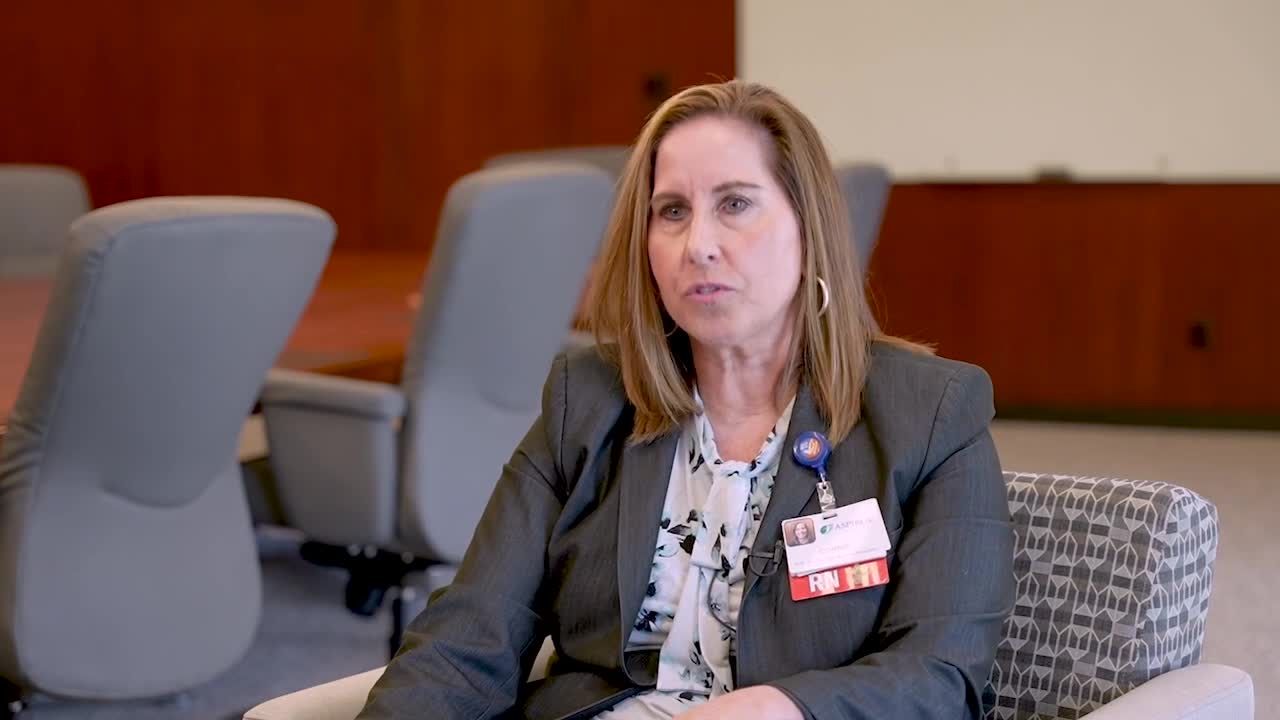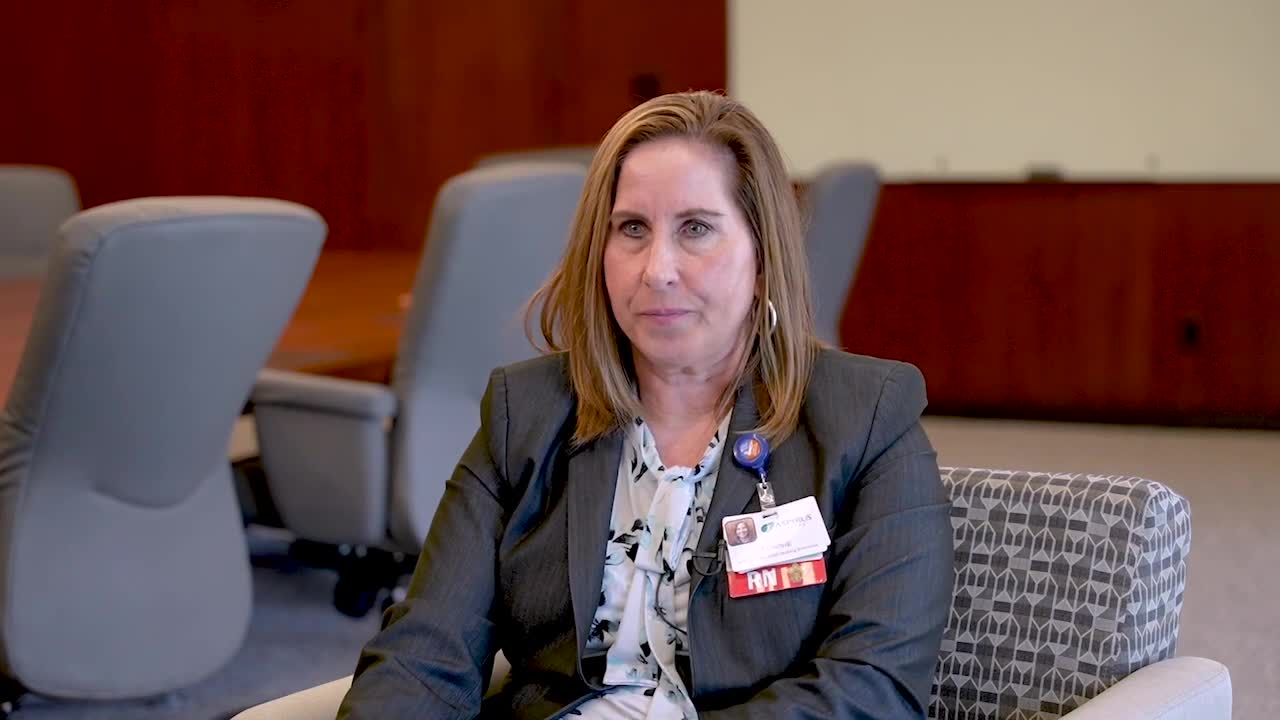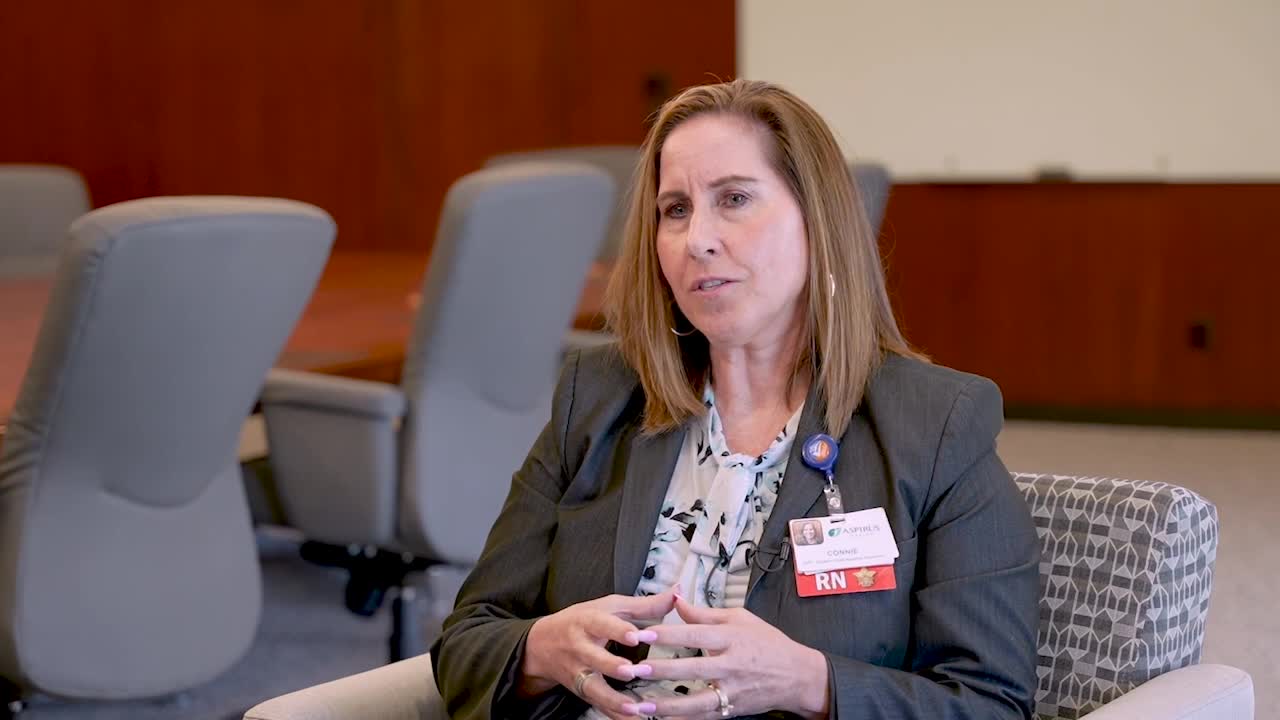Understanding and Adapting to the Current State of Nursing
10/4/2022
The past two years have changed a lot in our lives. People are prioritizing different aspects of life, working remotely more, and some have decided they need a change.
These shifts have been exacerbated by the COVID-19 pandemic and the nursing career field in particular has been impacted. Today, nursing vacancies are hitting an all-time high.
The U.S. Bureau of Labor Statistics projects 194,500 average annual openings for registered nurses between 2020 and 2030, with employment projected to grow by 9 percent.
"The biggest impact of COVID is that we have fewer nurses in the workforce. Not only in our Aspirus family, but also in contract staff,” said Connie Bradley, Aspirus Senior Vice President & System Chief Nursing Executive. “Many are now asking ‘where’s the workforce?’ and we don’t know where they went.”
Connie has been with Aspirus for a little over a year. She has split time in her career between nursing leadership and health care operations for more than 36 years. She started as a bedside nurse and now leads the functions and operations of nursing for the health care system.
Connie says the biggest challenges she faces as a nursing leader now are resiliency and staffing challenges.
“We’ve had some nurses choose to retire early, some have decided to get out of health care, and many are seeking alternative opportunities such as working from home,” Bradley said.
Nurses represent the largest component of the health care workforce, according to the American Association of Colleges of Nurses. They help people with trauma, assist physicians, dispense medicine, and help heal us when we’re sick.
Aspirus has seen a decrease in length of stay and hospitalizations as the COVID-19 pandemic has drawn down, but there’s still a great need to care for patients.
Contract staff were brought in as the pandemic spread across the country. The number of travel nurses nearly doubled to at least 100,000 in the U.S., according to industry research firm Staffing Industry Analysts. While travel nurses are an important short-term resource to meet immediate staffing needs, a chronic over-reliance on premium labor is not financially sustainable.
Nationally and at Aspirus, the demand for travel staff is decreasing, but they are still needed due to fewer nurses working as part of the core staff.
“The conundrum is the demand is higher than the supply of core staff, and at Aspirus and in our markets we are all competing for that small number of resources,” Bradley said. “So, we have to be very good about how we use our current resources within Aspirus.”
Learn More About Travel Nurses

The focus now shifts to rebuilding the core staff and retaining those already in the system. The strategies for doing this range from offering unique learning opportunities, reimagining how the work is done, and providing new and progressive staffing models.
New nurses entering the workforce represent the biggest talent pool available to health care systems such as Aspirus. However, an influx of novice nurses can lead to what’s called an experience-complexity gap.
The overall experience of the nursing workforce is on the decline as retirement-age nurses exit the workforce while the influx of new nurses continues to grow. At the same time, the patient population is becoming older and more complex, with more chronic health issues.
“It’s really important that we do a good job onboarding these new nurses,” Bradley said. “We have several of these programs and are being very thoughtful of the process.”
Aspirus has implemented programs such as a student nurse internship. Nursing students can participate in one of these programs at any Aspirus hospital in the spring, summer and fall. Internships last 10 weeks and are available in a variety of different units.
Aspirus also offers a New Graduate RN Apprentice Program. This allows new nurses to spend time over a six-week period in various units throughout Aspirus Wausau Hospital, the tertiary care center for the Aspirus system. Nurses then meet with leaders to discuss the best place for the nurse and the organization.
These programs allow nurses to secure a productive start to their career, but they also need to continue to gain experience doing actual nursing work to best serve their patients, their organization and their career.
It’s ideal for health care organizations to have nurses operate at the “top of their license.” This means they need to spend less time on record-keeping, cleaning rooms or scheduling. Organizations need to make sure they are intentionally filling their open support staff positions to allow nurses to operate at the top of their license.
Aspirus has developed programs to ensure it provides the proper support to its nursing staff. One example is the Certified Nursing Assistant (CNA) Student Program. Aspirus has partnered with area training facilities to offer a paid learning opportunity with a guaranteed position upon course completion.
“We’re trying to do the same thing with our medical assistants, surgical technicians and laboratory technicians as well,” said Bradley. “These are positions that we’re really trying to raise the bar on because they will help support other roles.”
Learn More About Onboarding New Staff

The future of nursing also looks to be more flexible. Traditional inpatient float pools are a vital resource, but the future must move beyond that to include different roles, locations, hours and responsibilities. This added flexibility would not only help with enhanced resources, but also with retention.
“We’ve got to think differently and have a mindset that offers flexibility and variability in our staffing and scheduling,” Bradley said. “We still have some work to do, but we are moving more in that direction.”
Training and support are vital elements of a productive nursing workforce, but they only go so far without a positive working environment. That’s why Aspirus is implementing the American Nurse Credentialing Center’s “Pathway to Excellence (PTE)” program throughout its system.
The PTE framework identifies the elements of inter-professional work environments where nurses flourish and are empowered.
“The reason why I like Pathway to Excellence is because it’s based on the nurses’ and the teams’ perception of their environment,” said Bradley. “Nurses get to decide if their organization provides them with the opportunity to thrive."
Learn More About Pathway to Excellence

There are going to be plenty of opportunities for nurses to thrive moving forward. Life after the COVID-19 peak will continue to present many challenges, especially in the rural areas of Wisconsin and Michigan’s Upper Peninsula. Those challenges will be overcome by the future of nursing.
“There’s a vast opportunity that awaits you,” said Bradley. “You will never be bored and if you lean into it, you will learn a lot. So, get ready.”
Back to all Posts